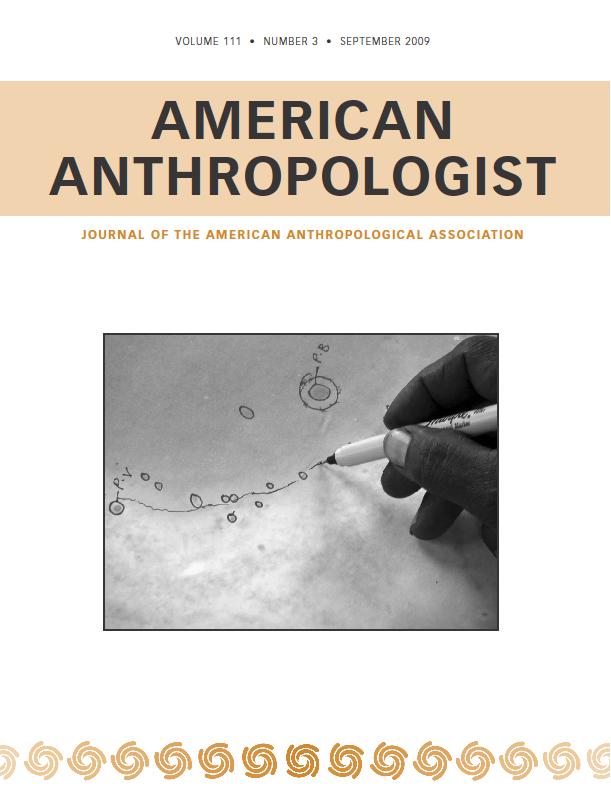This post represents the second installment of our special review section on Muslim Networks from Hajj to Hip Hop, Islamic Civilization and Muslim Networks Series. First installment available here.
Miriam Cooke and Bruce B. Lawrence, eds: Muslim Networks from Hajj to Hip Hop, Islamic Civilization and Muslim Networks Series (Chapel Hill, N.C.: University of North Carolina Press, 2005). Pp. 338. $59.95 cloth, $21.50 paper
Muslim Networks from Hajj to Hip Hop provides a much-needed and thought-provoking challenge to obstinate preconceptions about Islam. Whereas Muslim networks have been widely associated with terrorist groups in the popular media in the aftermath of 9/11, a fine-tuned, network-centred approach to the exploration of Islamic civilization is adopted in this eminent collection of essays. Edited by Bruce Lawrence and Miriam Cooke, respectively Emeritus Professor of Islamic Studies and Professor of Asian and Middle Eastern Studies at Duke University, the book contains thirteen essays covering a broad spectrum of Muslim collectives. It is the second volume in the wider series Islamic Civilization and Muslim Networks, which studies Muslim believers across several continents in both historical and contemporary contexts. In doing so, its contributors overcome portrayals of Islam as a homogeneous faith, geographically fixed to the Orient, or as a pre-modern antithesis to Western society. Contrasting a monolithic narrative of Islamic orthodoxy (Asad 1986: 15), the essays illustrate how the belief system is diversely transformed in new contexts. In comparison to previous studies on Islam, Muslim Networks from Hajj to Hip Hop creates a new interdisciplinary space for intellectual exchange between the humanities and social sciences, while the authors shed light on the formation and development of religious networks. Akin to the arabesque ornaments embellishing the front page of the book, the skilful, network-centred approach evolves in numerous variations in all thirteen essays. The stories of various Muslim communities, past and present, are told in the light of faith-based connections.
The recurring motif in the collection is that of Muslim networks, which refers to both an interconnected set of social relations and a strong commitment to the Islamic faith that becomes manifest in the imagined global Muslim community, the umma.
The prime purpose of this noted collection is to correct a long-standing omission: scholars in the social sciences and humanities alike failed to recognise the role Muslim networks played in the evolution of the Islamic civilization from the 7th to the 21st century. Hence, the contributors place emphasis on both “the networked nature of Islam and the impact of Muslim networks on world history” (p. 1). The theoretical approach developed in the volume unites social scientists and humanists in this subject-based area of research. The essays reveal a consistent trait of Islamic civilization, that is the tight-knit networks holding believers together across space and time. Depicting the diversity of Muslim networks, the collection demystifies the complexity of faith-based togetherness. Rather than focusing on static phenomena, the authors capture the movement of Islam by evoking imagery of travel and its intrinsic dynamics. Travel was integral to both the constitution and evolution of Muslim networks, ranging from academic cooperation and artist circles to trader connections, as previously observed by Clifford Geertz (1968: 41). Vincent Cornell’s essay ‘Ibn Battuta’s Opportunism: The Networks and Loyalties of a Medieval Muslim Scholar’ traces the extensive journeys of the Moroccan academic, unravelling the strong ties between members of the professional trader circle ulama in the 14th century. Jamillah Karim’s ‘Voices of Faith, Faces of Beauty: Connecting American Muslim Women through Azizah’ imposingly portrays the networks of American Muslim women that have been bolstered by the popular women’s magazine Azizah over recent decades in the United States. The relationship between Muslim networks and information technologies is another significant sub-theme of the collection. In ‘Ideological and Technological Transformations of Contemporary Sufism’ Carl Ernst explores Sufi networks in relation to the development of information technologies, from mass printing in the late 19th century to internet-based communication in the late 20th century. The last contribution to the collection of essays addresses a recent facet of Islam that emphatically exemplifies the unifying forces of the umma. Samy Alim’s essay ‘A New Research Agenda: Exploring the Transglobal Hip Hop Umma’examines the community that emerged from the powerful networks created by Hip Hop artists of Muslim faith.
Embedded in national and linguistic subcultures, Hip Hop became a testimony to a new global community embracing all Muslim believers.
To what extent the newly tailored network approach will provoke a paradigm shift in the study of Islam, as proclaimed by the editors, can only be answered in the years to come. It is evident, however, that the thirteen articles have given rise to a strong transdisciplinary debate about ways of studying Islam in the social sciences and humanities. The authors broaden the horizons of their audience and foster inter-religious as well as inter-cultural dialogue in the interconnected world of the early 21st century. The essays unfold the dynamics of faith-based networks and testify that belief systems are deeply embedded therein. Despite their intellectual weight, the various accounts of Muslim networks are written in an accessible and detail-rich style, enjoyably comprehensible to all who seek to better understand how the destiny of faith is intertwined with social networks.
As the book can also be read as an introduction to Islamic civilization, I recommend it to interdisciplinary audiences and undergraduate students wishing to comprehend the development of the world religion.
References: Geertz, C. 1968, Islam Observed: Religious Development in Morocco and Indonesia. The Dwight Harrington Terry Foundation Lectures, Vol. 37. New Haven; London : Yale University Press. Asad, T. 1986, The Idea of an Anthropology of Islam. Washington, D.C. : Center for Contemporary Arab Studies. Christian Ritter is Post-Doc at the Istanbul Studies Center at Kadir Has University.



